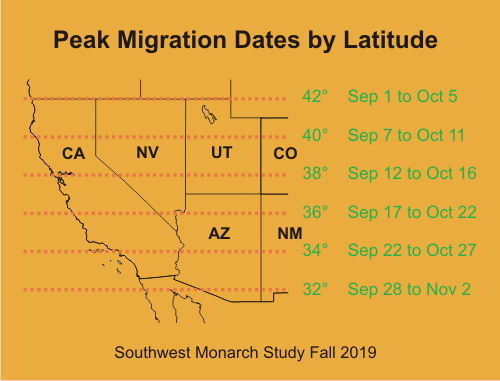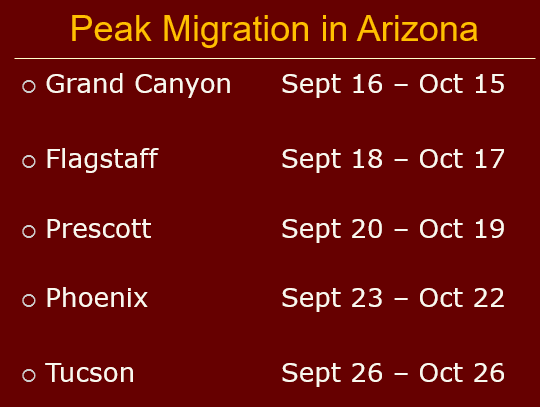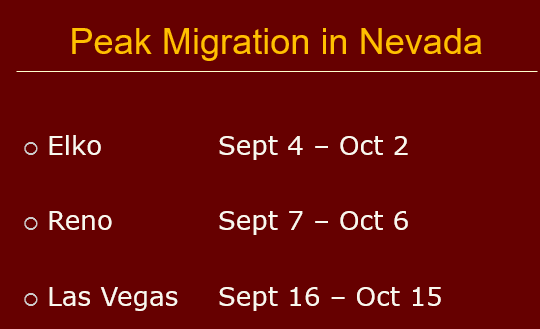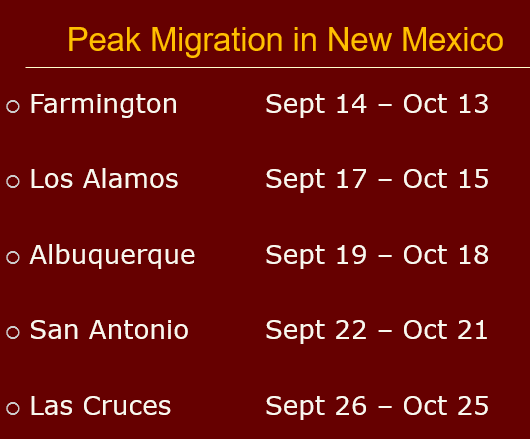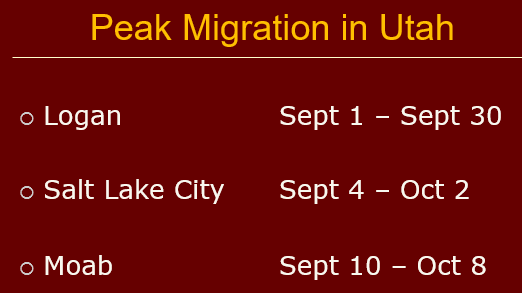
|
||
Peak MigrationHere is a general guideline of when you can best expect to see the most migrating monarchs in your area. We based our recommendations on sun angle, the angle of the noon day sun, that may influence the monarch migration each fall. Monarch Watch created a chart and we transposed their latitudes to the southwest United States. Based on the results of over 18,000 tagged monarchs, we extended the ending date of the peak migration by a few days. Begin tagging at least one month prior to these dates:
Click on a state name for a chart Arizona New Mexico Nevada Utah Please keep in mind that winds, cold fronts, rain and other weather phenomena can impede or hasten the migration at a given latitude. Furthermore, extensive warm temperatures can extend the fall migration window allowing another generation to eclose. Baum and Mueller (2015) found breeding monarchs move through an area about one month prior to the predicted peak migration through an area. Their offspring then join the peak migration approximately one month later. Southwest Monarch Study data suggests that some of these early migrating monarchs do not start breeding, but continue their migration. Our earliest recoveries in Mexico and California are of monarchs tagged about one month before the predicted peak migration window. (A recovery is a tagged monarch seen at a remote location.) Migration numbers decrease after the peak migration and, in the lower latitudes, end with those tagged in late mid-November. References BAUM, K.A. & E. K. MUELLER 2015. Grassland and roadside management practices affect milkweed abundance and opportunities for monarch recruitment. In Oberhauser, K., K.R. Nail, & S. Altizer (eds.), Monarchs in a changing world, pp. 197-202. Cornell University Press, New York MORRIS, G.M., KLINE C., MORRIS S.M. 2015. Status of Danaus plexippus population in Arizona. The Journal of the Lepidopterists' Society. 2015 Jun;69(2):91-107 |
||
|
Unless specified otherwise, all data Copyright © 2010-2021 Southwest Monarch Study Inc. Information from this site may not be copied or distributed without prior written approval from Southwest Monarch Study |
|
Webdesign Copyright © 2010-2020 Southwest Monarch Study Inc. |


